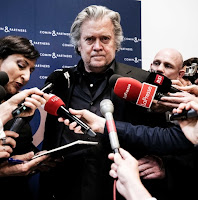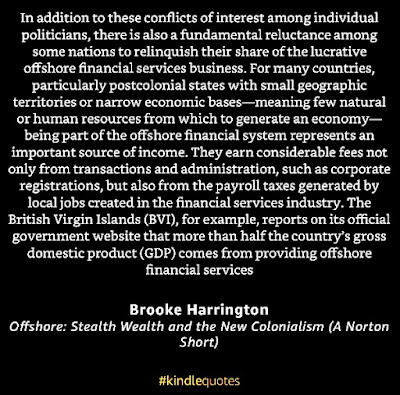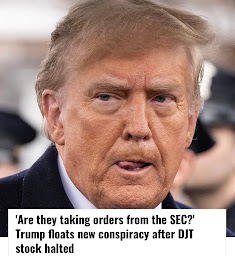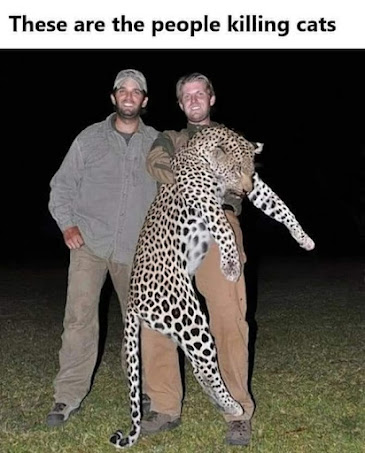NOW REPORTING FROM BALTIMORE. An eclectic, iconoclastic, independent, private, non-commercial blog begun in 2010 in support of the federal Meaningful Use REC initiative, and Health IT and Heathcare improvement more broadly. Moving now toward important broader STEM and societal/ethics topics. Formerly known as "The REC Blog." Best viewed with Safari, FireFox, or Chrome. NOTES, the Adobe Flash plugin is no longer supported. Comments are moderated, thanks to trolls.
Search the KHIT Blog
Monday, September 30, 2024
"What else could go wrong?"
Wednesday, September 25, 2024
Vote early if you can.
- Putin hits UKR nuke plants?
- Israel and Hezbollah throw down all the way, perhaps dragging us in?
- Jack Smith J6 revelations that move the needle?
Wednesday, September 18, 2024
BREAKING: New at @ScienceMagazine
ARTIFICIAL INTELLIGENCE
Durably reducing conspiracy beliefs
through dialogues with AI
Thomas H. Costello, Gordon Pennycook, David G. Rand
ABSTRACT
Conspiracy theory beliefs are notoriously persistent. Influential hypotheses propose that they fulfill important psychological needs, thus resisting counterevidence. Yet previous failures in correcting conspiracy beliefs may be due to counterevidence being insufficiently compelling and tailored. To evaluate this possibility, we leveraged developments in generative artificial intelligence and engaged 2,190 conspiracy believers in personalized evidence-based dialogues with GPT-4 Turbo. The intervention reduced conspiracy belief by ~20%. The effect remained 2 months later, generalized across a wide range of conspiracy theories, and occurred even among participants with deeply entrenched beliefs. Although the dialogues focused on a single conspiracy, they nonetheless diminished belief in unrelated conspiracies and shifted conspiracy-related behavioral intentions. These findings suggest that many conspiracy theory believers can revise their views if presented with sufficiently compelling evidence.
And, oh yeah, "Gish Gallop?"
 |
| Click |
Thanks for this. It goes almost verbatim to my long-standing concern about how 2024 may well play out. We are now only 45 days out from the election. I have downloaded Ari’s new book and begun reading it. I encourage everyone else to do it likewise. The prologue alone will blow your mind.
Remember that if Trump’s principal focus is denying 270 to throw it to the House, he starts out only needing Supreme Court backing of three justices should a supportive SCOTUS intervention be necessary; he doubtlessly already has Alito and Thomas in the bank. He will of course go through all the melodramatic motions of filing every lame objection in every venue possible just like he did in 2020, but all of that stuff to me is now just requisite sideshow noise. Denying 270 is the last-resort key. IMO it explains his lackluster final approach dilettante campaigning and bizarre ALL CAPS bleatings.
45 days. Ugh.
Tuesday, September 17, 2024
Offshore Stealth Wealth
“He is surrounded by a mysterious halo of family confidences, of which he is known to be the silent depository.” With these words, Charles Dickens introduces one of his most memorable characters: Mr. Tulkinghorn, the villain of Bleak House. Tulkinghorn is a lawyer specializing in trusts and estates, making him privy to the private lives of Britain’s nobility. A master of legal intricacies, Tulkinghorn’s emotionless, unreadable façade gives him a reputation much prized by his clients for protecting their secrets, as well as their fortunes.
Though he is their employee, Tulkinghorn wields a power that quietly controls the lives of his clients. This distinguishes him from the legion of other professionals and servants in the novel: unlike the family physicians, butlers, and governesses who serve the nobles, Tulkinghorn’s knowledge of the families’ innermost workings makes him their master. Such “inside outsiders” deserve more scrutiny than they have received, given their role in managing large capital flows at the boundary of private family life and the public worlds of law and the market. This is a gap in knowledge that I aspire to fill here.
In a sense, Bleak House can be read as a story of the triumph of professionals over nobles, and of knowledge over wealth. Dickens’ description of Tulkinghorn as the “master of the mysteries of great houses” is reminiscent of what Max Weber once wrote of the court accountants of the Persian shah: they “made a secret doctrine of their budgetary art and even use a secret script” to consolidate their power and ensure the shah’s dependence upon them through obfuscation.3 This is one way of characterizing elite professional work, particularly in the domain now known as “wealth management”—the business of deploying legal and financial expertise to defend the fortunes of high-net-worth individuals and families…
Harrington, Brooke. Capital without Borders: Wealth Managers and the One Percent (pp. 1-2). Harvard University Press. Kindle Edition.
The American Con Man Who Pioneered Offshore Finance
How a now-obscure financier turned the Bahamas into a tax haven—and created a cornerstone of global plutocracyThe Broligarchs Are Trying to Have Their Way
The antidemocratic politics of having it all
Friday, September 13, 2024
Truth Social down 80%? $399 Trump Sneakers not selling? $69.95 Trump Bibles not selling? $99 Trump NFTs? What'choo gonna do?
Former President Donald Trump plans to deliver remarks next Monday about cryptocurrency and the launch of the company World Liberty Financial, a crypto platform controlled by the Republican nominee's sons Donald Jr. and Eric.I'd seen repeated Trump posts across the past month or so on the topic. I thought "man, yoo can see this one comin' from a mile away.."
His speech will come 50 days before Election Day, an extraordinary use of dwindling campaign time to promote a personal business. The Republican former president has long mixed his political and business interests and marketed sneakers, photo books and Trump-branded Bibles during his 2024 campaign.
"We're embracing the future with crypto and leaving the slow and outdated big banks behind," Trump said in a video posted Thursday to X, the social media site that will also host his address on the subject at 8 p.m. EDT on Monday from his Mar-a-Lago home.
As part of his presidential campaign, Trump has pledged to turn the United States into the "crypto capital of the planet," raising red flags that he could use the federal government to help support a business tied to his family…
One time, he exhorted that crypto would henceforth be "made in the USA."
The widely-hyped crypto platform of the Trump family is planned for a launch next week. World Liberty Financial is only one of the multiple crypto businesses that they position as the "future" of America, with ludicrous promises once he is in office.
It will be led by his sons, Donald Trump Jr. and Eric Trump, but much remains unknown about the new crypto platform from his lineage…
Chase Herro’s involvement in the [Trump WLFi] project raises significant concerns due to his questionable business history. Herro has been linked to selling dubious products like marijuana, colon cleanses, and various get-rich-quick schemes. He also operated “mastermind” groups, which charged hefty membership fees in exchange for vague networking and business strategies.
Additionally, Herro has a background as a pick-up artist under the alias “Zack Bauer.” He co-founded Date Hotter Girls, a platform that offered seminars teaching men how to “become the ultimate alpha male.” This venture, like most of his others, looks opportunistic and exploitative. In the cryptocurrency space, Herro has been involved in failed ventures like Pacer Capital, a trading firm that no longer exists, and Subify, a content platform marketed as an alternative to mainstream services like Patreon. These past activities have raised concerns about his role in the Trump family’s latest crypto endeavor.
Although, the vision of World Liberty Financial is appealing and addresses real needs in the decentralized finance space. However, the timing of this project appears suspicious, especially considering the involvement of the Trump family and Chase Herro, both of whom have reputations for questionable business ethics. Their history adds an air of skepticism to what could otherwise be a promising project…
Tuesday, September 10, 2024
Friday, September 6, 2024
Everybody Must Get Stoned
…I want students to perceive of themselves as Earthlings, wholly dependent on the planet’s sacraments—and to realize that any rational society would align its practices with those of the system that sustains it.
If I do not always succeed, perhaps I can be forgiven. By the time students come into my classroom, they have long since absorbed prevailing societal conceptions about the relationship between humans and Earth. Anthropologist Clifford Geertz famously defined culture as the constellation of stories that groups of humans tell themselves about their place and purpose in the world. In the United States, where capitalism has become the de facto religion, the stories we tell about who we are mostly exclude Nature. The natural world is simply a passive backdrop against which the “real” stories unfold. So when I try to convince students that the soils they’ve never thought about, the natural landscapes that are obscured by urban infrastructure, the rocks they assume to be deaf and dumb, are actually in charge of everything, it’s no wonder that they look away, unconvinced.
In the Western world, our shared rituals are no longer sacred but merely transactional—buying, selling, influencing, tweeting, endorsing, sponsoring, lobbying, and above all, consuming. At this point, it is hard to find our way back; our worship of novelty is in fundamental opposition to the “eternal return.” Most of our technology is predicated on subverting the Earth’s rituals rather than participating in them; we cannot become “contemporary with the gods” if we believe we’ve replaced them. The cosmos is now the global economy, and the titans who rule it believe they are exempt from natural law. Some of them imagine that humans are destined to live on Mars—that we could transform a planet with no oceans or soils or tectonics into an Earth-like Eden in a matter of decades—or that we will, for some unexplained reason, be better off in the “metaverse.” Even if we could homestead on a new planet, or wanted to live in a virtual world, we would still be us—the same flawed creatures expelled from the first Eden.
We understand far more about Earth than we did when I first became a geologist, yet we seem no closer to wisdom about ourselves. When I finished my PhD, my advisor gave me a biography of Charles Van Hise,3 the structural geologist who mapped the Baraboo Hills and would have known this very outcrop. The volume sat on my bookshelf for thirty years before I finally read it and became a Van Hise groupie. Van Hise was a colleague of T. C. Chamberlin, the eponym of our Svalbard valley, who also served as University of Wisconsin president. Both geologists felt called to public service because they believed that science would lead society into a more enlightened age. Van Hise used his post as university president to advance strikingly progressive causes: not only public education but also conservation, women’s suffrage, and limits on corporate power. He was a friend of Wisconsin’s populist governor “Fighting Bob” LaFollette, and together they promoted the utopian “Wisconsin Idea”: a vision for workers’ rights, income redistribution, and access for all citizens to the resources of the university. Today, that would be labeled a socialist agenda. Van Hise believed it was the path that a scientifically advanced society would logically follow.
I’d love to spend an afternoon with Van Hise on this outcrop and catch him up on what we know about the geology of the Baraboo Hills, rock deformation, and plate tectonics, but I’d be reluctant to tell him how far we are from his vision of the future. And I wouldn’t share with him my conclusion, based on my own career in academe, that knowledge and rational thought alone cannot leverage social change—without an accompanying cultural revolution. Free-market economics has permeated too deeply into Western habits of mind, making behaviors that are considered pathological at the individual level acceptable at the scale of society as a whole. In fact, the so-called dark triad of personality traits linked with borderline psychopathy—self-centered grandiosity, calculated exploitation, and lack of emotion5—are, in the corporate world, just good business sense.
I sometimes wonder whether, at this point in the history of human civilization, it would be possible to create a fresh new kind of secular spirituality free from both the narrow orthodoxies of traditional religions and the venal dogmas of capitalism. The primary texts would be the rock record and the book of nature; lullabies would reassure infants that they were in the care of a wise old planet; children would grow up knowing about planetary superheroes like carbon-gobbling dolomite and plate-moving eclogite; holidays would celebrate sandstone aquifers and stable granitic continents; the central principles would be wonder, gratitude, connectivity, collectivity. After a few generations of such reacculturation, an egalitarian ethos would emerge as we came to think of ourselves as Earthlings with deep bonds of kinship with one another, and all components of nature. Humans would aspire simply to blend in. Within this worldview, amassing disproportionate wealth, oppressing other humans, or degrading the environment would be seen as both unnatural and immoral. My utopian reveries are interrupted by a cynical voice in my head: Yeah right, fat chance…
Bjornerud, Marcia. Turning to Stone: Discovering the Subtle Wisdom of Rocks (pp. 266-269). Flatiron Books. Kindle Edition.
BAD AIR DAYS
The study of mass extinctions became a distinct and fashionable subdiscipline within paleontology in the decade after the end-Cretaceous impact was proposed. To those who embraced the newly “legalized” catastrophism, it seemed likely that all mass extinctions could eventually be blamed on extraterrestrial impacts. A brilliant paleontologist Jack Sepkoski of the University of Chicago, who was the first to recognize the potential of Big Data in paleontology, believed he had detected a 26-million-year cycle in extinction frequency through an analysis of thousands of fossil catalogs. In a strange kind of neo-uniformitarianism, he speculated that episodic die-offs might be linked with Earth’s periodic passage through the spiral arms of the galaxy, which could destabilize the orbits of comets.22 This inspired eager searches for evidence of large impacts at the times of other mass extinctions, and moved the study of impact cratering from a fringe field into the geologic mainstream. But three decades later, no other major biological crisis has been convincingly linked with the crash landing of a comet or asteroid. We are left with the sobering fact that sometimes things can go horribly wrong for life on this planet, for reasons completely internal to the Earth system.
Besides the end-Cretaceous cataclysm, the other great extinctions include, chronologically (1) the Late Ordovician event about 440 million years ago, which was the first major pruning following the Cambrian explosion; (2) a closely spaced pair of die-offs in the late Devonian Period (about 365 million years ago), by which time macroscopic life had moved onto land; (3) the end-Permian holocaust 250 million years ago, the mother of all mass extinctions, which John Phillips aptly marked as the close of the Paleozoic Era; and (4) the Late Triassic event, a cruel blow just 50 million years after the Permian debacle. Depending on how one measures the severity of these massacres (by numbers of species or genera or families vanquished), the dinosaur extinction is the fourth or fifth in rank.
Although the victims and the circumstances of these calamities differ in detail, they share some striking similarities (appendix III). All—including the end-Cretaceous event—involved abrupt climate change, and all, with the exception of the Devonian event (when tropical seas turned cold), are linked with rapid warming. Second, all involved major perturbations to the carbon cycle and carbon content of the atmosphere, either by unusually effusive volcanism (Permian, Triassic, Cretaceous) and/or through an imbalance between carbon sequestered by the biosphere and carbon released from stored hydrocarbons (Ordovician, Devonian, Permian, Triassic). Third, all entailed rapid changes in ocean chemistry, including acidification that devastated calcite-secreting organisms (Permian, Triassic, Cretaceous) and/or widespread anoxia (dead zones), which asphyxiated almost everybody except for sulfur-loving bacteria (Ordovician, Devonian, Permian). All the extinctions, in fact, were followed by a period of time—hundreds of thousands to millions of years—when microbes alone thrived while the rest of the biosphere struggled to get back on its feet (or into its shells). The great mass extinctions challenge any conceit that we are the triumphant culmination of 3.5 billion years of evolution. Life is endlessly inventive, always tinkering and experimenting, but not with a particular notion of progress. For us mammals, the Cretaceous extinction was the lucky break that cleared the way for a golden age, but if the story of the biosphere were written from the perspective of prokaryotic rather than macroscopic life, the extinctions would hardly register. Even today, prokaryotes (bacteria and archea) make up at least 50% of all biomass on Earth.23 One might say that Earth’s biosphere is, and always has been, a “microcracy,” ruled by the tiny. When larger, arriviste life-forms falter, infinitely adaptable microbes, whose evolutionary timescales are measured in months rather than millennia, are always eager to move in and reassert their long-held dominion over the planet.
Perhaps most importantly, none of the mass extinctions—even the relatively “clean” Cretaceous disaster—can be fully attributed to a single cause; all involved rapid changes in several geologic systems at one time, which in turn triggered knock-on effects in still others. In some respects, this is reassuring; it means that it takes a “perfect storm” of convergent causes to destabilize the biosphere. Nevertheless, many of the malefactors—greenhouse gases, carbon-cycle disturbances, ocean acidification, and anoxia—are uncomfortably familiar to current residents of Earth. And if a looming catastrophe has multiple origins, there will be no precise predictions and no silver-bullet solutions.
The story of the atmosphere reminds us that the sky over our head is not the only, or ultimate, one to shelter the Earth. When there is change in the air, even after long periods of stability, it can blow through with breathtaking suddenness, as Svalbard’s withering glaciers attest. In the aftermath of these winds of change, upheavals in biogeochemical cycles ripple through ecosystems at all levels. Organisms that have invested everything in the old world order will suffer or even be extinguished while microbes quietly clean up the mess and decree a new set of rules for the survivors. Tinkering with atmospheric chemistry is a dangerous business; ungovernable forces can come out of thin air.
Bjornerud, Marcia. Timefulness: How Thinking Like a Geologist Can Help Save the World (pp. 122-125). Princeton University Press. Kindle Edition.













































